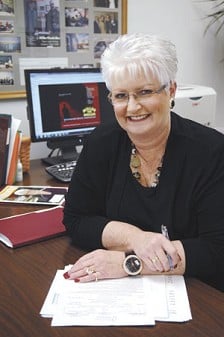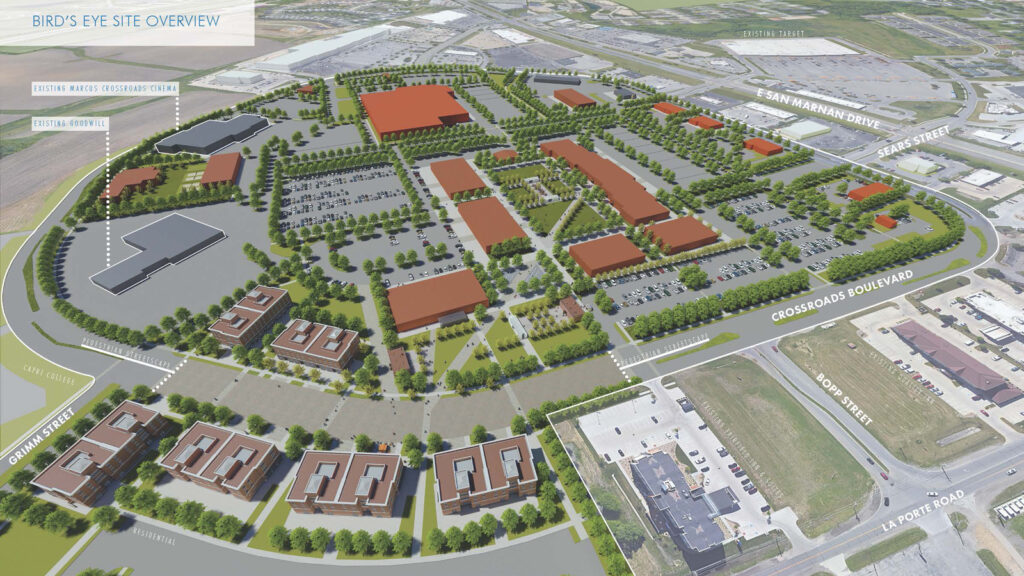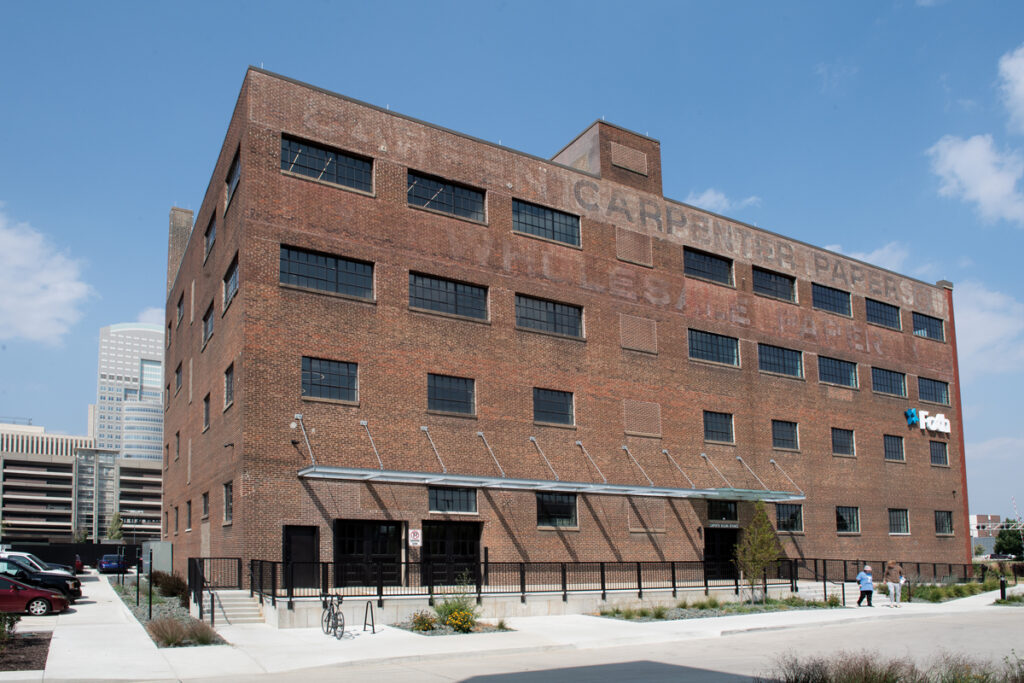Is there light ahead?

Kris Young hopes to tunnel out of an economic rut that led her Pleasant Hill underground construction company to file for bankruptcy protection earlier this year.
Following a tough recession that brought nonresidential construction to a standstill and left some U.S. companies with insufficient capital to carry on, the president of Miller the Driller is relying on faith, family and the possibility of a new banking relationship to save her father’s company.
Founded in 1948, Miller the Driller has decades of experience in the heavy construction industry and has burrowed out of tight spots before. During the farm crisis in the early 1980s, Young said, contractors suffered as unemployment soared.
“I never thought I would go through anything as bad as that was,” she said. “We had 22 percent and 24 percent interest rates and no work, but we did survive it and flourished in the 1990s.”
In the midst of her current business challenges, Young became the first female president of The Associated General Contractors of America (AGC) in March, and she now looks at the embattled construction industry from the perspective of the 30,000-member organization she leads.
As she heads one of the industry’s largest trade groups, Young continues to push for federal legislation that would allocate more money toward improvements to highways, water systems and other infrastructure projects.
Young said it’s not unusual for hole-boring companies such as Miller the Driller to come across hardened or oddball objects while hollowing out holes for water, sewer and storm pipes.
Drilling contractors get paid to cut through dirt, sand and rock. Occasionally, they even uncover materials such as concrete, trees or railroad ties. But it’s the unanticipated obstacles that Young finds most jarring. The same is true in her financial struggles.
Hard place
“It has to do with some pretty unexpected events that I had no control over,” she said of the bankruptcy filing. “It’s not how I planned to start out 2011. Knowing I was going to be president (of AGC) in March, I didn’t plan to have to file Chapter 11. But actions that were taken against the company and against the family have forced us into this corner, and it’s not very pleasant.”
Young, who began working for her father, Gene Miller, in 1974 and now has a 52 percent interest in the company, said she is uncertain whether it will emerge from its financial turmoil.
A “perfect storm” of unforeseen circumstances has threatened to derail the operation, which Young said has been profitable for the past three years. But the beating Miller the Driller took on a tough job in the state of Washington and some unanticipated legal fees in Missouri caused unusual stress.
She said the loss of a long-term lending partner has been the hardest part.
Following the 2007 acquisition of Horizon Financial Services Corp. by Valley Bank, Miller the Driller got stuck between a rock and a hard place. “We had a couple bad years that were a result of the economy,” Young said. “We kind of went into it early and came out of it early.”
However, Young said, Miller the Driller didn’t fit Valley’s profile.
“I certainly understand others have to make business decisions,” she said. “We’ve had that discussion, and I understand. I just wish I could have had six more months, or nine more months. I could have been gone from there without having to file. We had just settled into the Valley Bank situation when the economy tanked. This absolutely wasn’t our choice.”
Punching through
Young isn’t ready to give up on the family business that has been digging, tunneling and ramming pipe for more than 63 years. This month, Miller the Driller had been operating four crews in the Des Moines metropolitan area and one in Central Illinois.
During the recession, Young said, her firm picked up a fair amount of work financed by the federal economic stimulus dollars allocated to support water and sewer projects across the country.
As the broader economy recovers, she plans to continue putting more than 25 full-time union employees to work in states east of the Rocky Mountains and within a 1,000-mile radius of Des Moines.
“We have an abundance of work, work that consistently comes up to bid,” Young said. “The underground business has never really slowed down.”
Young hasn’t slowed either. In addition to overseeing her company and making national appearances on behalf of AGC, the 60-year-old executive spends time reaching out to younger construction professionals and has earned a reputation for encouraging women aspiring to leadership positions in the male-dominated industry.
“When I started going to meetings in the early 1980s, I was the only woman there,” Young said of AGC. “And I was young, besides. Younger women are really interested in what I’ve done and how I did it.”
Young, who last month was featured along with Vermeer Corp. CEO Mary Andringa in a Bloomberg article about four women who followed in their fathers’ footsteps, said she doesn’t get what all the fuss is about.
“When you were raised in the Miller family, you were raised to work,” she said. “If the yard needed mowed, you got it mowed. That’s just the work ethic that our parents drilled into us.”
Young, whose company joined AGC in 1979, has served as a vice president, senior vice president and director of the national organization. In 1995, she became the first woman to preside over AGC of Iowa. In January, the Des Moines-based chapter inducted Young into its Hall of Fame.
Last month, Young gave the keynote address at the National Association of Women in Construction’s (NAWIC) regional conference in West Des Moines.
“NAWIC is an organization that promotes success of women in the construction industry,” said Sue Holcomb of Urbandale-based Holcomb Corp., adding that Young was well received by the approximately 50 women in attendance. “She is so down to earth. She has walked where they are headed. Most of them are trying to do jobs which mostly men have held that position.”
Softer side
“I guess I don’t think I have that big a story to tell,” Young said. “I’ve worked really hard all my life. This has been a really hard business. You have some successes, and then more often than not, you have one bad job, or one bad phone call, and you can be spiraling. It gets frustrating.”
Young said Miller the Driller, which in 2010 reported revenues of nearly $6.5 million, was advised to cut spending by resisting the urge to rent potentially unnecessary equipment and focusing on the right jobs.
“When the economy is tough, you don’t necessarily go after projects that have such a high degree of risk,” she said. “A high degree of risk can often mean a high degree of profit if the job goes well. If the job doesn’t go well, you can really get beat up.”
The worst thing a drilling contractor can sink a bit into is a reinforced steel structure, such as a bridge pier, Young said. Rocks can be just as hard.
“Back in the 1970s, I remember we got up against a rock in Cedar Rapids, and when they finally uncovered that rock, it was as big as a boxcar,” she said. “We couldn’t get through it.”
The stakes are higher now, and Young said she is looking for the proverbial light at the end of the tunnel. She hopes to eventually transfer control of Miller the Driller to her 39-year-old son, Brandon Young, the company’s vice president of operations.
“The one thing I found out very quickly when our problems hit here in January is that we’re not alone,” she said. “Sometimes you feel like you are, and everybody has different circumstances. … We need to find an equity partner and have a capital injection.”
Meanwhile, Young expects to forge a more unified voice among AGC member organizations for increased governmental spending as her company works to unbury itself from a pile of unpaid bills.
“The last two or three years, it’s been rather piecemeal, and we really hope for and support a bill that would fund construction and infrastructure for a longer period of time,” she said. “We want more funding, and we want a six-year bill.”
Miller the Driller tunnels through bankruptcy
On June 9, a federal judge will decide whether to dismiss Miller the Driller’s bankruptcy case. For the 63-year-old family business, that could be a life-or-death decision.
Miller the Driller, whose legal name is Gene Miller Co. Inc., filed Jan. 14 to reorganize its finances under Chapter 11 of U.S. Bankruptcy Code, citing $2.3 million in assets and $6 million in debts.
Moline, Ill.-based Valley Bank and the U.S. trustee overseeing the case say Miller the Driller has little chance of emerging from bankruptcy as a viable company.
“Enough is enough,” attorneys for Valley Bank wrote in a motion to dismiss the case. “The debtor continues to churn through cash collateral, but possesses no reasonable likelihood of rehabilitation.”
Valley Bank claims it is owed more than $2.8 million of that cash, delivered to the Pleasant Hill company in a total of three notes that were issued in 2006 and 2008. According to court documents, Valley Bank modified loan terms at least six times in 2008 to defer payments or extend maturity dates in order for Miller the Driller to bring the notes into compliance.
The U.S. trustee also says the bankruptcy case should be dismissed, citing among other things payroll and withholding taxes that have not been paid and delinquent payments to union pension and health-care plans. The company’s schedules state that it owes $347,528 to a variety of union funds and $768,686 in taxes.
Miller the Driller has claimed in court proceedings that it is recovering from a blow to its finances that resulted from the collapse of construction activity in 2008. For its 2009 fiscal year, the company reported gross income of about $3.6 million, and in 2010 it reported nearly $6.2 million.
However, Valley Bank said in a court document that the company’s audited financial report for 2009 and 2010 noted negative net income and remarked that Miller the Driller “may be unable to continue as a going concern.”











